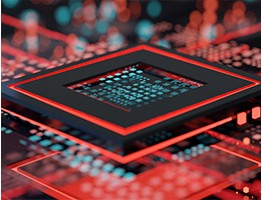Brain-Computer Interface Tech: Femtosecond Laser for Micro-Nano Electrode Mfg
source:Chen Minlan
keywords:
Time:2025-10-14
Source: Chen Minlan 11th Oct 2025
Brain-computer interface, known as BCI for short (full English name: brain-computer interface), consists of two core components as indicated by its structural composition: the brain and the computer. The "interface" here can be understood as the interaction between the brain and computer technology. For example, paralyzed patients can use this technology to control robotic arms through mental commands, thereby performing actions they cannot otherwise complete—such as pouring water or typing.
BCI technology is a cutting-edge and high-profile research field, holding significant value in areas including biomedical care, brain science research, and aerospace.
Electrodes are a vital component of BCIs and a key part in the implementation of BCI technology. They serve as sensors connecting electronic devices and biological nervous systems, acting as the bridge and link between the brain and computers. Therefore, unlocking the mysteries of micro-nano scale brain electrode fabrication is like opening the "Moonlight Box" (a metaphor for a key that unlocks new possibilities) for BCI technology.

What types of electrodes are used in brain-computer interfaces?
(1)From the perspective of contact methods or degrees, they can be classified as: non-invasive, semi-invasive and invasive.
Non-invasive refers to recording the neural activity of the brain through devices worn on the scalp. Common types include electroencephalogram (EEG) and magnetoencephalography (MEG). Its advantages are low cost and no risk of trauma. However, the amount of information it can collect is limited, somewhat similar to single-machine operation.
Semi-invasive refers to the technique of implanting electrodes under the scalp and adhering to the dura mater, but not reaching the cerebral cortex. For example, electrocorticography (ECoG).
Invasive refers to the method of implanting microelectrode arrays into the brain through surgical procedures, such as the cortex or beneath the cortex, to record the neural population activity signals in real time. This is the most direct way to obtain internal brain information in brain-computer interface technology, with high signal quality and excellent precision.
From this classification method, it can be inferred that the electrodes used in brain-computer interfaces are smaller in size and thinner in thickness. Moreover, the processing surface of this microelectrode needs to be flat and smooth; otherwise, it is very likely to cause an immune response in the body after implantation. The subtractive processing of small-sized and thin materials is precisely what femtosecond lasers excel at. By taking advantage of their characteristics of high peak power and short pulse width, they can achieve high-precision and burr-free precision processing. Femtosecond lasers are currently an important processing technology in micro-nano processing.

(2) From the perspective of electrode materials and characteristics, they can be classified as: rigid electrodes and flexible electrodes.
Rigid electrodes: In the past, the manufacturing of brain-computer interface electrodes mainly relied on rigid materials such as tungsten, gold, alloys, and semiconductor materials. Rigid electrodes have certain limitations. For instance, they tend to increase biological rejection. Moreover, the assembly process is complex, and it is difficult to precisely align rigid electrodes, which also affects the quality and efficiency of signal transmission between biological tissues and electrodes.
From this perspective, it can be seen that the electrodes of brain-computer interfaces have relatively strong material expansibility, and may involve many fine processing techniques that are difficult to achieve with traditional processing methods, such as thermosensitive materials like polymer films. The core advantage of femtosecond lasers is their unrestricted applicability to materials and minimal thermal impact, thus they can well address the exploration of more materials for future flexible electrodes.

2. What are the manufacturing techniques of microelectrodes?
It is said that there are currently two mainstream types: one is the microfilament electrode, and the other is the silicon electrode on a semiconductor substrate.
So how did they manage to make them?
Micro-Electro-Mechanical Systems (MEMS) technology can be used for the processing of high-density electrode arrays. The principle is to spin-coat photoresist on silicon wafers or flexible polymer substrates, and then perform ultraviolet exposure through a mask to transfer the microscopic electrode patterns onto the substrate. This technology has currently been adopted by some medical enterprises. For instance, Step Medical will initiate the construction of a medical-grade MEMS (Micro-Electro-Mechanical Systems) electrode processing platform, focusing on addressing clinical challenges faced by patients with paralysis, aphasia, and other diseases.
Although the electrodes processed by MEMS technology have extremely high precision, there are also limitations. For example, they need to be used in conjunction with mask plates, the entire process has many steps, the initial investment cost of the production line is high, and in addition, the working environment required by the production line is relatively high, and the operation and maintenance costs are also large.
Femtosecond laser, as a flexible manufacturing technology with no material limitations and much higher precision than traditional processing methods, brings more "solutions" to the precise processing of brain-computer interface electrodes.
The subtractive processing of femtosecond lasers mainly falls into three directions: micro-hole drilling, etching, and cutting, all of which have the potential to be applied in the manufacturing of brain-computer interface electrodes. For example:
(1) Micro-holes: Femtosecond lasers have no limitations when it comes to materials, so they can also be used to process micro-holes at the micrometer level for the multi-layer stacked structure of brain electrode materials. With a depth-to-diameter ratio within 10:1, they can meet the requirements of electrical interconnection design.
(2) Etching: Femtosecond lasers can process metal films without damaging the underlying flexible polymer substrate. The minimum line etching width can reach 5 μm, and the highest precision can reach ±1 μm. This perfectly meets the processing requirements of various electrode wires and pad patterns.
(3) Cutting: In terms of cutting, femtosecond lasers can ensure smooth and burr-free cutting surfaces. Therefore, they can be used to cut local flexible electrode arrays on wafer chips with high precision and good cutting quality.

3. What are the advantages of femtosecond lasers?
Compared with MEMS, femtosecond laser processing seems to be more suitable for the design and development of brain-computer interface electrodes, as it has the following characteristics:
(1) Femtosecond lasers can directly etch patterns by vaporizing and removing materials with their instantaneous energy to form precise graphics. This process does not require a mask plate, thus shortening the design and verification cycle and reducing costs.
(2) Femtosecond lasers can process any solid material without material restrictions. For instance, traditional rigid electrode materials such as gold and tungsten, semiconductor materials like silicon, and various flexible polymers can all be processed.
4. Conclusion
Why can brain-computer interface technology attract so much attention?
On the one hand, its development is closely related to our medical and health care. On the other hand, its application scope is very wide, and in the future, it may be applied to all aspects of life such as national defense and military, entertainment, education, etc.
Therefore, understanding the processing technology of electrodes and doing a good job in electrode research and development can ensure steady progress and continuously promote the practical application of brain-computer interface technology.
 Global LiDAR Giants Engage in Escalating Patent Wars
Global LiDAR Giants Engage in Escalating Patent Wars From Cambridge to Haining, he made China's lasers light up the world for the first time
From Cambridge to Haining, he made China's lasers light up the world for the first time 4 in 5 days! These laser "mega-projects" successively put into operation or capped
4 in 5 days! These laser "mega-projects" successively put into operation or capped Analysis of Global Optical Communication Chip Market: Tiered Competition & Chinese Rise
Analysis of Global Optical Communication Chip Market: Tiered Competition & Chinese Rise "Laser Power" Shines at the Shanghai International Industry Fair
"Laser Power" Shines at the Shanghai International Industry Fair
 Zhuojie Laser: Breaking barriers via tech breakthroughs, aiming to lead high-end light sources
Zhuojie Laser: Breaking barriers via tech breakthroughs, aiming to lead high-end light sources Dr. Sun Linchao: Pioneer and Leader in China's Field of Medical Aesthetic Laser Therapy
Dr. Sun Linchao: Pioneer and Leader in China's Field of Medical Aesthetic Laser Therapy Guo Guangcan, CAS Academician & USTC Professor: Four Decades Chasing Quantum "Light"
Guo Guangcan, CAS Academician & USTC Professor: Four Decades Chasing Quantum "Light" Ma Renmin: A Peking University Physicist Striving to Break Through the Boundaries of Nanolasers
Ma Renmin: A Peking University Physicist Striving to Break Through the Boundaries of Nanolasers Lu Guangfeng: Retired but Not Faded, 20-Year Dedication to Laser Gyroscope R&D
more>>
Lu Guangfeng: Retired but Not Faded, 20-Year Dedication to Laser Gyroscope R&D
more>>










